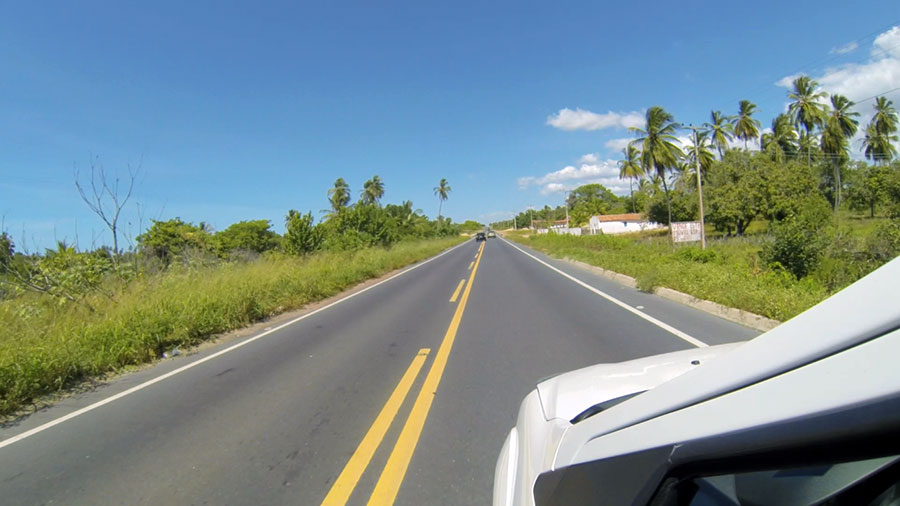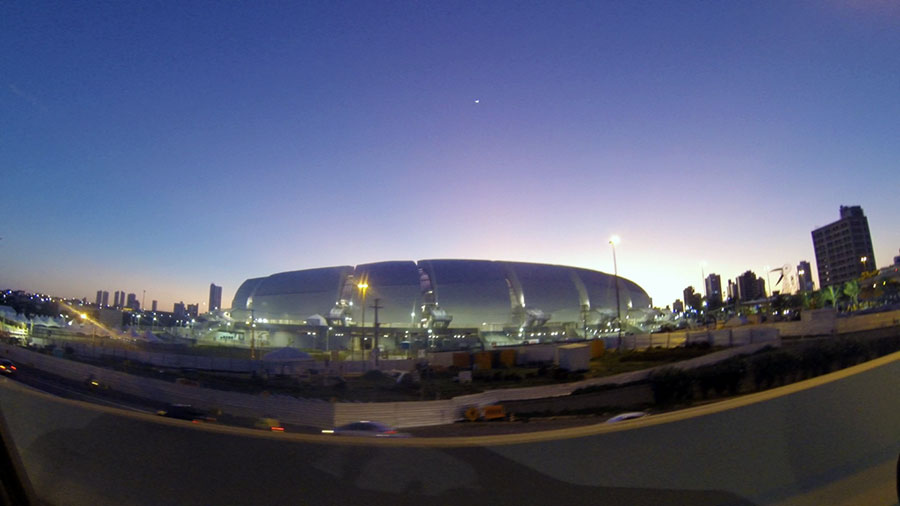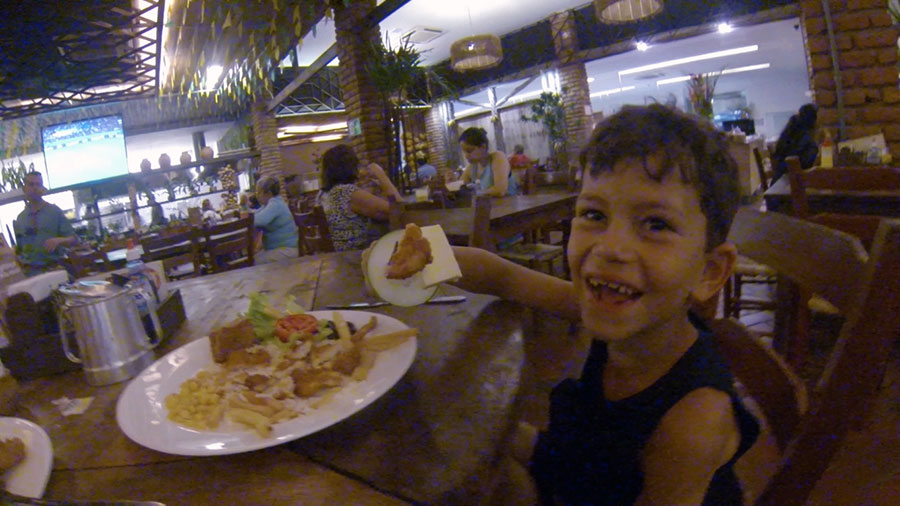After 3 super relaxing days in Pipa, and a much welcome break from driving, it was time to jump back in the car, and a plane, and a car again. Confused? We were a bit too!
Our destination was the Chapada Diamantina (Diamond Cliffs) National Park, 6 hours west of Salvador. We had originally planned to drive the whole way to Salvador, basically in time for the Holland v Costa Rica quarter final (which we had tickets for), but this would have meant having no chance to visit one of the most incredible places in Brazil – basically the Grand Canyon of Brazil.
So we changed our plans to cover some of the 1300km route south by plane.
We set off from Pipa very early in the morning (7am) for the drive back up the coast an hour to Natal airport.

One of the guys from our hotel had very kindly offered to come with us, as we were expecting a hard time from the car rental company over the car (which was seriously damaged from our pothole incident).
We followed Mauricio on his bike through the early morning streets…

He dropped off his bike and joined us in the car for the rest of the journey

We had a bit of a problem finding Natal airport. They made a new airport for the World Cup, gave it the same 3 letter airport code (NAT), and located it several miles away from the old one. Due to delays nobody was really sure whether the new airport was open.
Finding information about it was tough, Google Maps was still pointing to the old airport, and the roads between the two airports weren’t finished.
Luckily we’d anticipated this the night before thanks to a throwaway comment by one of the hotel managers, and given ourselves plenty of time to go to the old airport first, establish it was indeed closed, and then navigate the tricky roads and suburbs to get to the new airport if needed.

Throughout all this I couldn’t help but think how many people during the World Cup must have missed their flights at Natal. It took us an hour to get to the new airport from the old one, and we had a local helping us. We had to stop and ask directions several times.
When we got to the new airport there were no signs (eg for car rental drop off), everything looked under construction, and we couldn’t even be sure that our car rental company (Avis) had a working office there.
We went into the airport terminal to find the car rental desks in the arrivals hall, passing through security in reverse (which seemed to be allowed somehow). Everything was good, Avis was there, and parking randomly outside seemed to be the correct thing to do to drop off the car.
Back outside we gave the car one last inspection before Avis bods came to do their inspection.

The damage on the rear wheel was pretty significant and obvious

And fairly obvious on the front wheel too
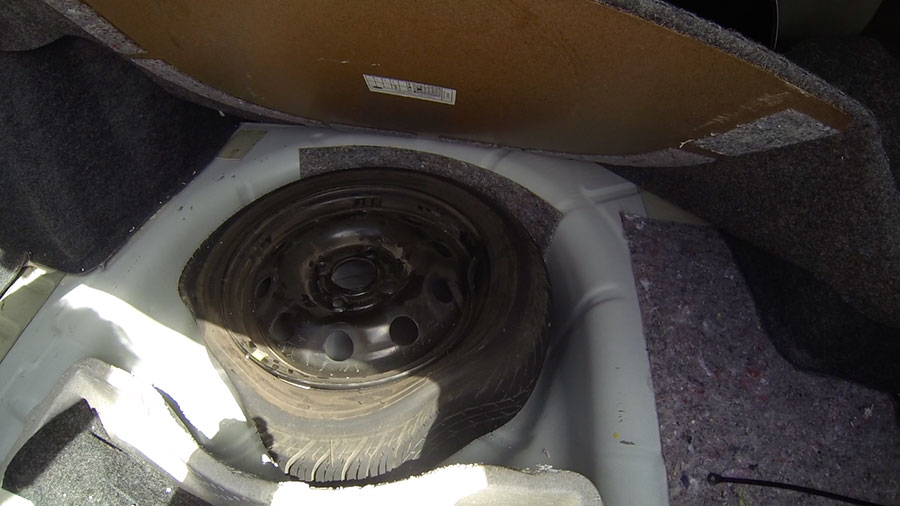
In these situations I find it’s always best to admit the problem at the front end, rather than let people ‘discover’ it. Doing so means you’ve established some level of trust, and they can focus on the problem you’ve admitted, rather than start looking for other problems after they inevitably find the first.
I was a bit worried about the underside of the car for example, which had taken a fair old beating on our 100km shortcut down a sandy road.
Mauricio had looked at me like I was mad when I asked him to tell Avis there was a serious problem with the wheels, and we waited nervously while Avis did the inspection.
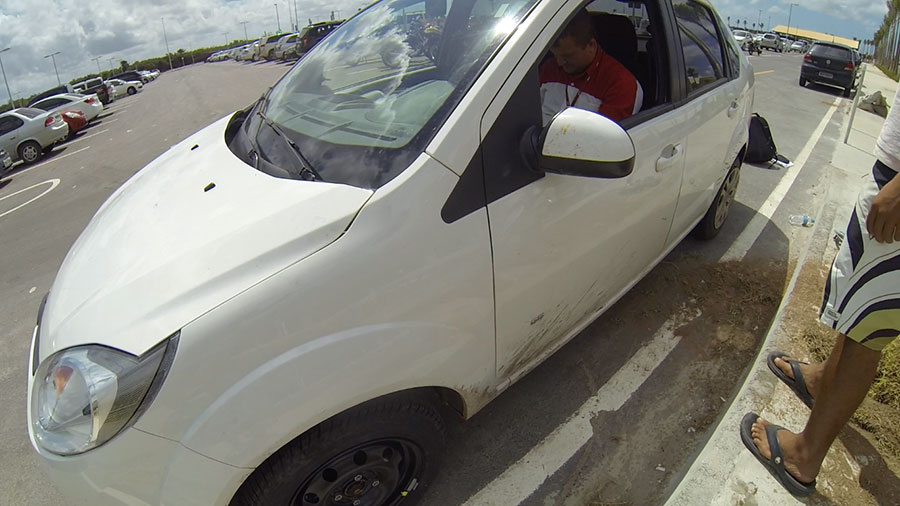
Inside we spent a tense hour negotiating the damage and the complex situation we had created by dropping the car to a different location than planned.
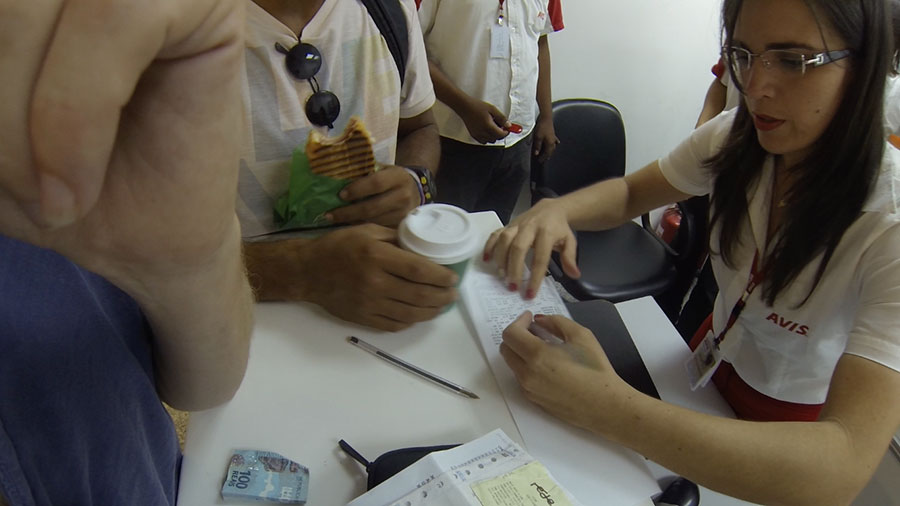
I was being super careful not to get ripped off having had a bad experience recently with Hertz in Mexico over a chipped windscreen. I insisted that the cost to repair the damage was quoted now rather than be charged to the card later.
There was no way I could have done all this without someone there to help – nobody spoke English well, and it involved long phone calls back and forth to Sao Luis (where we’d rented the car). My efforts the day before to call Avis about it in the US and get help were fruitless.
In the end we came away with a quote of $130 for two replacement wheels, a new tyre, and hub cab. I thought that was quite a result.
Semma and Eli had been waiting patiently nearby and we were now almost late for our flight. Fortunately, nobody else it seemed had managed to find the new airport at all, and there were literally multiple check-in agents waiting to help us. This is a budget airline queue in Brazil!

The empty airport theme continued as we made our way through security to the gate.

I kept wondering whether the plane would also find the new airport, but it did
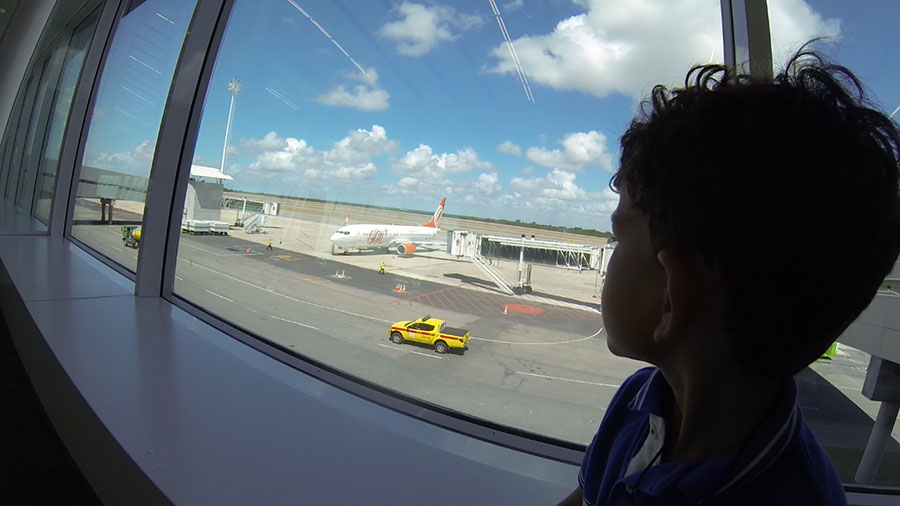
It was a quick flight (less than an hour) from Natal to Salvador

Eli had the window seat in our near empty plane

The staff were super friendly, possibly because they had nothing to do

And we’d arrived in Salvador!


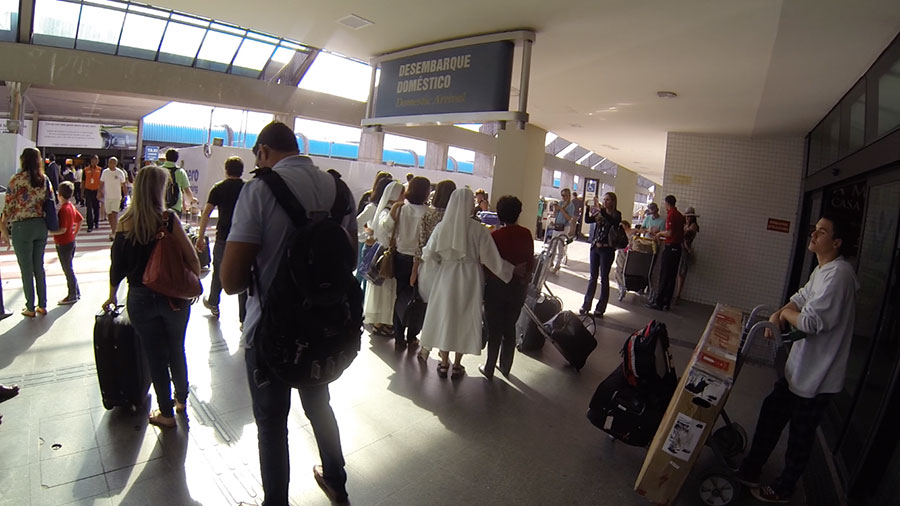
We had another long wait at a car rental counter

But spirits lifted as we reached outside for the shuttle bus
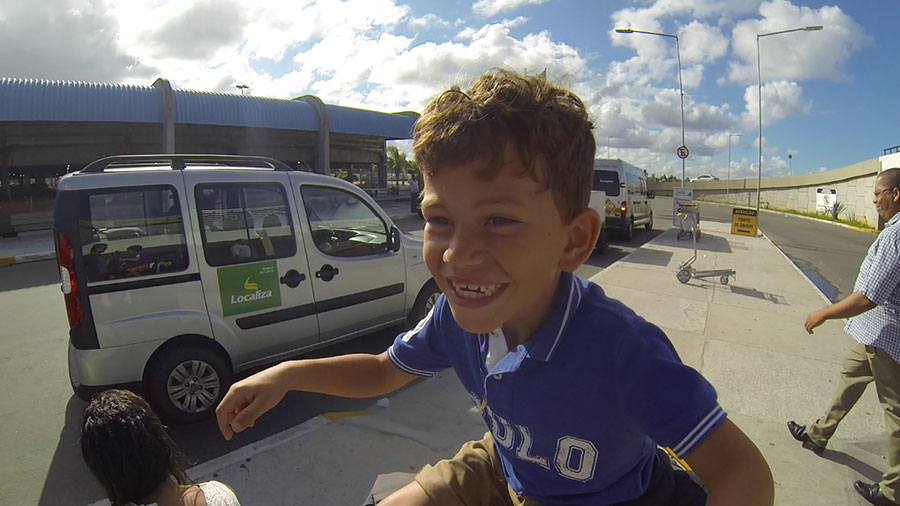
A quick ride through a cool natural ‘tunnel’

And into our new ride

The Chapada Diamantina National Park (Parque Nacional da Chapada Diamantina) is a long drive inland from Salvador (about 6 hours). We jumped straight on the highway so as to make good time.
The road from Salvador to Feira de Santana (Bahia state’s second largest city behind Salvador) was good, a new two lane highway, and we got there in a little over an hour.
We stopped briefly in the city to grab something to eat, and like many places in Brazil there were kids waiting at traffic stops to perform football skills for small change.

Outside of Feira de Santana, the road narrowed to one lane…

And soon it was dark.
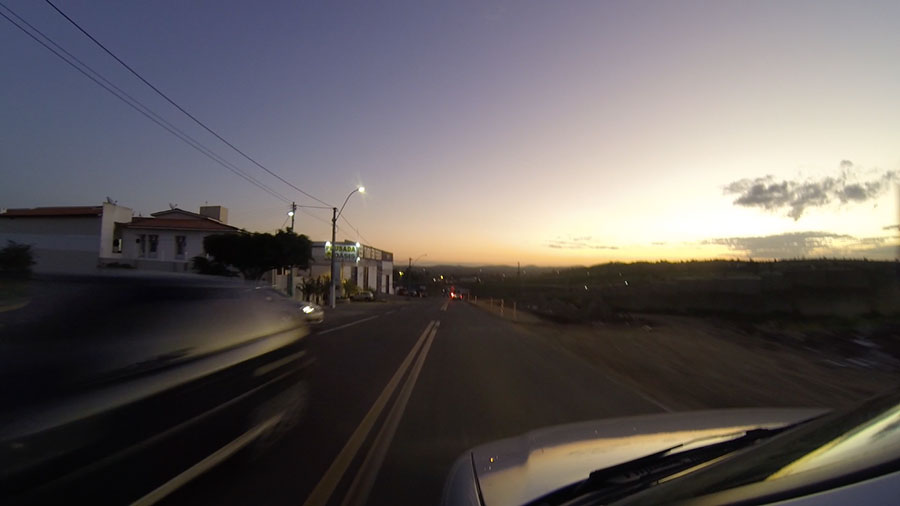
The rest of our journey (no photos) was very long and a little grueling. The road got worse, it was full of slow moving trucks, and progress was painfully slow. I spent hours literally waiting to overtake trucks on windy dark roads, we nearly ran out of gas and I had to ‘hug a truck’ from behind to make it to a gas station.
We finally arrived in Lencois, our base to explore the national park about 10pm and I had a moody waitstaff to deal with over dinner as they thought they were done for the night in the hotel restaurant!
Hopefully tomorrow it will all be worth it!!






